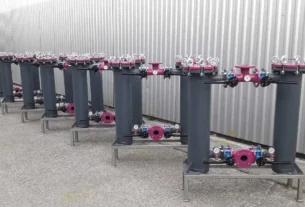Mittens have a long history, dating back thousands of years. The earliest evidence of mittens can be traced to ancient civilizations such as the Egyptians and Romans, who used rudimentary forms of mittens made from animal skins to protect their hands from the cold. These early mittens were simple in design, often consisting of a single piece of leather or fur wrapped around the hand and secured with straps or ties.
History of Mittens
Evolution of Mittens Over Time
As societies advanced, so did the design and construction of mittens. In medieval Europe, mittens became more refined, with artisans crafting them from wool and other fabrics for added warmth. Mittens also gained popularity among nobility, who adorned them with intricate embroidery and embellishments as a symbol of status.
Cultural Significance of Mittens in Different Regions
Mittens hold cultural significance in various parts of the world. In Scandinavian countries like Norway and Sweden, traditional hand-knit mittens are cherished as symbols of craftsmanship and heritage. Inuit communities in the Arctic regions rely on mittens made from sealskin or caribou hide to endure the harsh cold. Each culture has its own unique styles and techniques for crafting mittens, reflecting their values and traditions.
Types of Mittens
Traditional Wool Mittens
Wool mittens have been a staple in cold climates for centuries. Wool is an excellent insulator, retaining heat even when wet, making it ideal for keeping hands warm in snowy conditions. Traditional wool mittens are often hand-knit by skilled artisans using locally sourced wool yarn. These mittens come in various patterns and designs, with some featuring intricate Fair Isle or Nordic motifs.
Modern Materials and Designs
In recent years, advancements in textile technology have led to the development of modern mittens made from high-performance materials such as Gore-Tex, Thinsulate, and fleece. These materials offer superior insulation, breathability, and water resistance, making them ideal for outdoor activities like skiing, snowboarding, and mountaineering. Modern mittens also feature innovative designs such as touchscreen-compatible fingertips, allowing users to operate smartphones and other devices without exposing their hands to the cold.
Specialized Mittens for Various Activities
There are specialized mittens tailored to specific activities and environments. Ski mittens, for example, are designed with extra insulation and reinforced palms to withstand the rigors of skiing and snowboarding. Hiking mittens are lightweight and breathable, providing warmth without sacrificing dexterity during outdoor adventures. Some mittens even come with built-in hand warmers or battery-powered heating elements for added comfort in extreme cold.
Benefits of Mittens
Superior Warmth Compared to Gloves
One of the main advantages of mittens over gloves is their superior warmth. By keeping all fingers together in a single compartment, mittens allow for better heat retention compared to gloves, where fingers are separated. This makes mittens especially effective in subzero temperatures and windy conditions, helping to prevent frostbite and cold-related injuries.
Improved Dexterity with Some Modern Designs
While mittens are known for sacrificing dexterity in favor of warmth, some modern designs incorporate features that allow for greater finger mobility. Split-finger mittens, for example, have a separate compartment for the thumb, providing better grip and dexterity compared to traditional mittens. This makes them popular among outdoor enthusiasts who require precise hand movements during activities like climbing or photography.
Protection Against Frostbite and Cold-Related Injuries
In cold weather, exposed skin is vulnerable to frostbite and other cold-related injuries. Mittens provide essential protection by covering the entire hand and trapping body heat close to the skin. This reduces the risk of frostbite on the fingers and hands, which can occur when blood flow is restricted due to prolonged exposure to cold temperatures. Additionally, mittens help prevent moisture buildup inside the gloves, which can lead to discomfort and skin irritation.
How to Choose the Right Mittens
Considerations for Material and Insulation
When choosing mittens, it’s essential to consider the material and insulation for maximum warmth and comfort. Natural materials like wool and leather offer excellent insulation properties and breathability, while synthetic materials like fleece and Thinsulate provide lightweight warmth and moisture-wicking capabilities. The level of insulation required depends on the intended use and climate conditions, with thicker mittens being suitable for colder environments and thinner mittens for milder temperatures.
Proper Fit for Maximum Warmth and Comfort
The proper fit is crucial when selecting mittens to ensure maximum warmth and comfort. Mittens should fit snugly around the hand without restricting movement or circulation. A well-fitting mitten will create an insulating layer of air around the hand, helping to retain heat and keep fingers warm. It’s essential to try on mittens before purchasing them to ensure the correct size and fit, as sizing can vary between brands and styles.
Factors to Consider Based on Intended Use and Climate
The choice of mittens should also take into account the intended use and climate conditions. For outdoor activities like skiing or snowboarding, waterproof and windproof mittens with extra insulation are recommended to protect against the elements. In milder climates, lightweight and breathable mittens may be more suitable for everyday wear. Consider factors such as breathability, dexterity, and moisture-wicking properties when selecting mittens for specific activities and environments.
Caring for Your Mittens
Cleaning and Maintenance Tips
Proper cleaning and maintenance are essential for prolonging the lifespan of mittens and keeping them in good condition. Most mittens can be hand-washed using mild detergent and cold water, taking care to rinse thoroughly and squeeze out excess moisture before air-drying. Avoid machine washing and drying, as this can cause damage to the fabric and insulation. For stubborn stains or odors, spot-clean with a gentle stain remover or vinegar solution.
Proper Storage to Prolong the Lifespan of Mittens
Storing mittens properly when not in use can help prevent damage and extend their lifespan. Avoid folding or crumpling mittens, as this can cause creases and deformities in the fabric. Instead, lay mittens flat or hang them upside down to maintain their shape. Store mittens in a cool, dry place away from direct sunlight and heat sources, as prolonged exposure can cause fading and deterioration of materials. Consider using a breathable storage bag or container to protect mittens from dust and pests during the offseason.
Repairing Minor Damages to Extend Usability
Minor damages such as loose seams, torn stitching, or worn-out elastic can often be repaired to extend the usability of mittens. Invest in a basic sewing kit with needles, thread, and scissors to make simple repairs at home. For more extensive damage, consider taking mittens to a professional seamstress or tailor for expert repairs. By addressing minor damages promptly, you can prevent further deterioration and ensure that your mittens remain functional for seasons to come.
Fashion and Style with Mittens
Incorporating Mittens into Your Winter Wardrobe
Mittens are not only practical but also stylish accessories that can elevate your winter wardrobe. Choose mittens in colors and patterns that complement your outerwear and personal style, whether you prefer classic neutrals or bold statement hues. Consider coordinating mittens with other winter accessories such as scarves, hats, and boots for a cohesive and fashionable look. Experiment with different textures and materials to add visual interest and dimension to your outfits.
Conclusion:
Mittens are not only functional but also stylish accessories that can keep your hands warm and add a touch of flair to your winter outfits. Whether you’re braving the cold on a ski trip or just running errands around town, the right pair of mittens can make all the difference. From classic wool designs to high-tech performance materials, there’s a perfect pair out there for everyone. So next time you’re bundling up for the cold weather, don’t forget to grab your favorite mittens and embrace the cozy warmth they provide.




